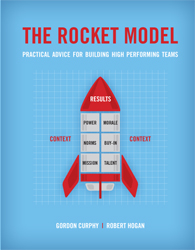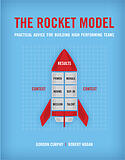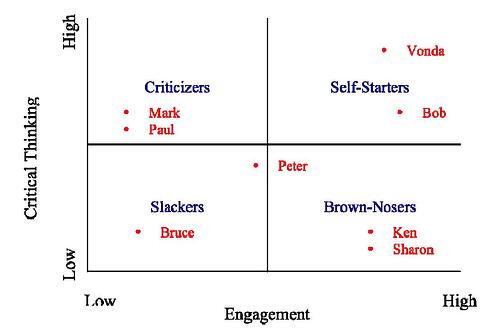
Teams have many norms, some of which might involve safety, expected work hours, e-mail inquiry response times, or meeting attendance. Research shows that some norms are more important than others; the rules governing a team’s operating rhythm, communication, decision-making, and accountability norms have the biggest impact on team cohesiveness and performance.
A team’s operating rhythm concerns the frequency and management of team meetings, and a surprisingly high number of leaders do not know how to run efficient team meetings. Communication may be a problem if team members complain about being in the dark, confidential conversations being shared with outsiders, or that difficult topics never get raised. Decision-making can be a problem when leaders make autocratic decisions or, conversely, groups make too many decisions by consensus. Leaders who play favorites or fail to hold members accountable for their performance or misbehavior usually have problems with team morale and performance.
Given the issues surrounding sub-standard performance and norm violations, every group and team will need a sheriff. Although members can play the role of team disciplinarian (i.e., shop stewards, athletic team captains, and Non-Commissioned Officers), more often than not the leaders must play this role. Unlike teams populated with Slackers, Criticizers, and Brown-Nosers, leaders who set clear expectations, hold members accountable, and treat people fairly usually attract and/or retain Self-Starters. If leaders are unwilling to uphold standards and hold people accountable for their performance, they will create dysfunctional teams that fail to achieve their goals. Establishing an explicit team accountability norm is important since few things can wreck team morale more quickly than favoritism. When members detect foul play, they can be expected to spend time complaining about the situations rather than doing what is needed for their teams to succeed. A related but even more prevalent problem for groups and teams is a lack of consequences. Too many leaders are more concerned about winning popularity contests than beating other teams, and are reluctant to hold members accountable for sub-standard performance and norm violations. Leaders who play favorites or fail to maintain standards will eventually have teams full of Brown-Nosers, Slackers, and Criticizers.



 Mornings aren’t my favorite thing, and the morning these events transpired was particularly early and particularly hot, which meant that I was in a particularly crappy mood.
Mornings aren’t my favorite thing, and the morning these events transpired was particularly early and particularly hot, which meant that I was in a particularly crappy mood. Norms are unwritten rules that guide human behavior. Examples include elevator and airport security line etiquette. Most people “know” what to do when entering an elevator full of strangers: enter the elevator, face the door, don’t make eye contact or engage in conversation, and leave quickly when reaching the desired floor. In airport security lines: take a bin; quickly fill it with shoes, jackets, laptops, liquids, etc.; put the bin and any luggage on the conveyor belt; walk through the body scanner; and then like Lucille Ball in the candy factory, reassemble everything as quickly as possible. Like all norms, those governing elevator and security line behavior are not written down but everyone is expected to abide by them. Those who don’t observe the norms are considered aberrant.
Norms are unwritten rules that guide human behavior. Examples include elevator and airport security line etiquette. Most people “know” what to do when entering an elevator full of strangers: enter the elevator, face the door, don’t make eye contact or engage in conversation, and leave quickly when reaching the desired floor. In airport security lines: take a bin; quickly fill it with shoes, jackets, laptops, liquids, etc.; put the bin and any luggage on the conveyor belt; walk through the body scanner; and then like Lucille Ball in the candy factory, reassemble everything as quickly as possible. Like all norms, those governing elevator and security line behavior are not written down but everyone is expected to abide by them. Those who don’t observe the norms are considered aberrant.

 Yahoo recently announced the
Yahoo recently announced the 

